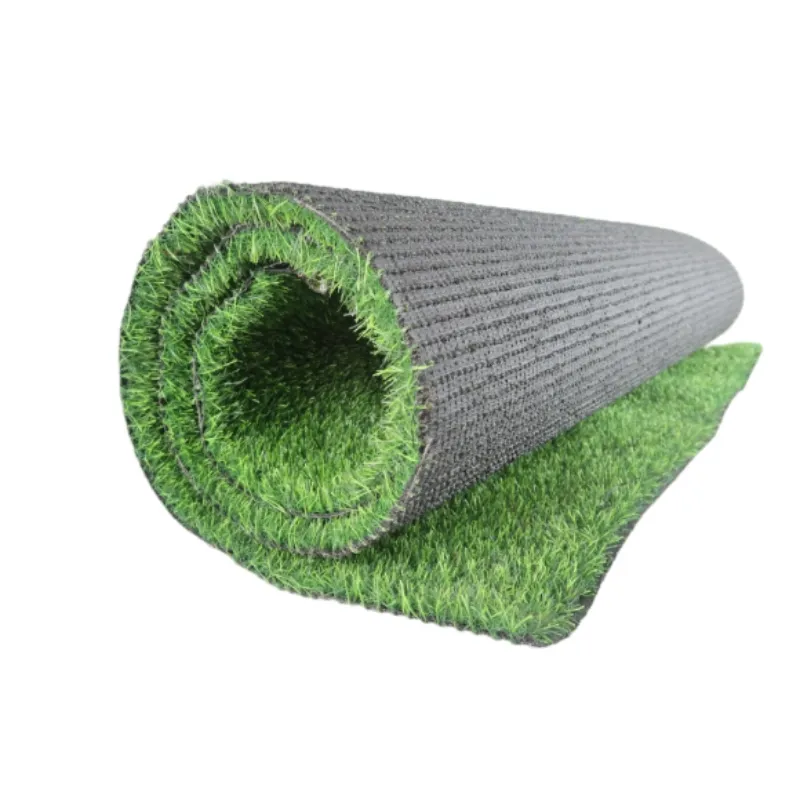
- Afrikaans
- Arabic
- Belarusian
- Bengali
- Czech
- Danish
- Dutch
- English
- Esperanto
- Estonian
- Finnish
- French
- German
- Greek
- Hindi
- Hungarian
- Icelandic
- Indonesian
- irish
- Italian
- Japanese
- kazakh
- Rwandese
- Korean
- Kyrgyz
- Lao
- Latin
- Latvian
- Malay
- Mongolian
- Myanmar
- Norwegian
- Persian
- Polish
- Portuguese
- Romanian
- Russian
- Serbian
- Spanish
- Swedish
- Tagalog
- Tajik
- Thai
- Turkish
- Turkmen
- Ukrainian
- Urdu
- Uighur
- Uzbek
- Vietnamese
Installing Artificial Turf Over Dirt for a Sustainable Lawn Solution
Oct . 21, 2024 18:30 Back to list
The Rise of Artificial Grass on Dirt A Sustainable Solution for Landscapes
In recent years, the popularity of artificial grass has surged, particularly in areas where maintaining natural grass can be a challenge. One of the most intriguing applications of artificial grass is its installation over dirt surfaces. This innovative approach not only enhances the aesthetic appeal of spaces but also presents a range of practical benefits that cater to modern landscaping needs.
Artificial grass, also known as synthetic turf, is made from polymer fibers designed to resemble natural grass. Unlike traditional grass that requires regular watering, mowing, and fertilizing, artificial grass offers an array of advantages that align with sustainability goals and convenience. When installed over dirt, it provides a functional solution for various environments, from residential gardens to commercial properties and sports fields.
One of the foremost benefits of laying artificial grass on dirt is its low maintenance requirement. Natural lawns demand significant upkeep, including frequent watering, which can strain local water resources, especially in arid regions. In contrast, synthetic turf eliminates the need for irrigation. Homeowners and businesses can conserve water while enjoying a lush green landscape year-round. This characteristic is particularly advantageous in places prone to droughts, where water conservation is essential.
Furthermore, artificial grass presents excellent durability. It is designed to withstand heavy foot traffic, making it ideal for areas that experience high usage, such as playgrounds, sports fields, and event venues. Grass maintained on traditional dirt surfaces often gets muddy and worn out, leading to unsightly patches and the need for frequent replanting. On the other hand, artificial grass maintains its appearance and integrity regardless of weather conditions, providing consistent functionality throughout the seasons.
artificial grass on dirt

The environmental impact of artificial grass also deserves attention. Traditional lawn care often involves the use of chemical fertilizers and pesticides, which can seep into the soil and eventually contaminate water sources. By utilizing artificial turf, property owners can drastically reduce their chemical footprint. Furthermore, many types of synthetic grass are made from recycled materials, enhancing sustainability efforts and reducing landfill waste. This shift not only protects local ecosystems but also promotes a healthier environment for communities.
Additionally, artificial grass offers safety benefits, particularly in playgrounds and sports facilities. It can be installed with shock-absorbing underlayers, providing a cushioned surface that reduces the risk of injury from falls. This feature is especially crucial in high-activity areas where children and athletes are frequently engaging in play or competition.
Installation of artificial grass over dirt involves several steps, but with proper planning and execution, the results can be highly rewarding. First, the area must be cleared of debris and vegetation. Next, a base layer, often made of crushed stone or gravel, is laid to ensure proper drainage and stability. Finally, the synthetic turf is laid down and secured. This process transforms neglected dirt patches into vibrant, usable spaces that can be enjoyed by families, pets, and communities alike.
Moreover, the aesthetic versatility of artificial grass allows it to fit seamlessly into various landscaping styles. From contemporary designs showcasing clean lines to more traditional settings that emphasize greenery, synthetic turf can adapt to meet any vision. Landscape architects and property owners can explore options that incorporate artificial grass with flower beds, stone pathways, and other design elements to create a cohesive landscape.
In conclusion, the application of artificial grass on dirt surfaces represents a progressive approach to landscaping that addresses numerous challenges faced by property owners today. With its low maintenance needs, durability, environmental advantages, and safety features, synthetic turf is not just a temporary trend but a long-term solution for creating beautiful, functional outdoor spaces. As we navigate the realities of climate change and conservation efforts, the use of artificial grass stands out as a beacon of innovation in sustainable landscaping practices. Its ability to transform dirt into vibrant green environments reflects a significant step towards redefining our relationship with nature and enhancing our quality of life.
-
The Benefits of Artificial Turf for Indoors
NewsJul.15,2025
-
How Artificial Grass Suppliers Ensure Quality Products
NewsJul.15,2025
-
Artificial Grass and Pets: A Space for Relaxation
NewsJul.08,2025
-
Balcony & Outdoor Decoration with Artificial Grass
NewsJul.08,2025
-
Best Indoor Artificial Grass for Home
NewsJul.07,2025
-
Best Pet Turf for Dogs: Safe & Durable Artificial Grass Options
NewsJul.07,2025
Products categories









